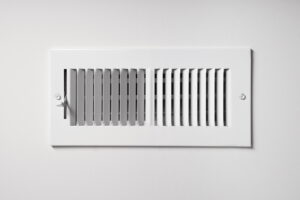Today, we’re diving into the world of air purifiers, exploring the diverse methods they employ to keep your indoor air clean and fresh. Understanding these technologies is key to making informed decisions when selecting the right air purifier for your home or office.
Indoor air quality is paramount for our health and well-being, given the amount of time we spend indoors. From allergens and pollutants to viruses and bacteria, our indoor air can harbor a variety of contaminants that affect our respiratory health and overall comfort. That’s where air purifiers come in, offering a range of technologies to effectively clean the air we breathe.
Ionizers
Ionizers are air purifiers that use charged ions to attract and remove airborne particles. By releasing negatively charged ions into the air, ionizers cause particles like dust, pollen, and pet dander to become too heavy to remain airborne, ultimately settling them out of the air.
While ionizers boast the ability to remove particles as small as 0.1 microns and are relatively quiet and energy-efficient, they also have drawbacks. One concern is their potential to produce ozone as a byproduct. Ozone, even in low concentrations, can be harmful, especially for individuals with respiratory issues. Thus, it’s essential to choose ionizers with low ozone emission levels and use them in well-ventilated areas.
UV Air Purifiers
UV air purifiers harness ultraviolet light to sterilize and disinfect the air by targeting and destroying airborne pathogens like viruses, bacteria, and mold spores. These purifiers typically feature UV lamps installed within HVAC systems or standalone units placed in specific areas.
One of the primary advantages of UV air purifiers is their ability to eliminate germs and microbes without producing harmful byproducts like ozone. Additionally, they require minimal maintenance and can complement existing filtration systems to provide comprehensive air purification.
However, UV purifiers may not effectively remove larger particles like dust and pet dander, necessitating their use in conjunction with other filtration methods for optimal results.
Ozone-Generating Air Purifiers
Ozone-generating air purifiers work by producing ozone molecules, which react with airborne contaminants to break them down into simpler, less harmful substances. These purifiers are effective at eliminating odors, mold, and bacteria, making them popular choices for improving indoor air quality.
However, the use of ozone-generating purifiers comes with significant risks. Ozone, even in small amounts, can irritate the respiratory system and exacerbate existing respiratory conditions. In general, we don’t recommend these types of air purifiers.
Air Purifiers With Multiple Methods
Some air purifiers integrate multiple purification technologies to offer enhanced air cleaning capabilities. These multi-method purifiers may combine mechanical filtration, ionization, UV sterilization, and activated carbon to target a wide range of contaminants and allergens effectively.
By incorporating various purification methods, these devices provide comprehensive air cleaning solutions suitable for diverse indoor environments. They are particularly beneficial for homes and offices with specific air quality concerns or high levels of pollutants.
Finding the Right Air Purifier
Selecting the right air purifier requires careful consideration of the available technologies and their respective advantages and limitations. At Hall’s Heating, Air Conditioning & Refrigeration, we’re committed to guiding you through the options and helping you find the ideal solution for your indoor air quality needs with our UV air purifier services in Haughton. Reach out to us for personalized recommendations and professional installation services.
Hall’s Heating, Air Conditioning & Refrigeration. Call the doctor of home comfort today.



